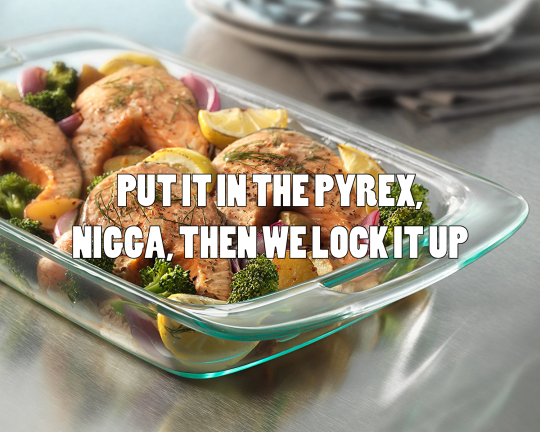Pop Culture Cannibalism
/One of the fondest memories of my childhood is a simple one. It’s not a surprise trip to Disneyland, or my first kiss, or the unboxing of a brand new video game console at Christmas. No, in fact, it’s more banal than almost anything you could ever imagine. In reality, one of the most saccharine and amber-coated memories of my pre-teens involved sitting in my family’s living room with my best friend on a lazy summer day watching VH1’s I Love The… Series. We sat there lethargically sprawled out on my family’s couch, pacified by the television as we killed an entire bag of those cheap grocery store fudge pops and gleefully watched early 2000’s actors, comedians, and musicians warmly reflect on the pop culture events of yesteryear.
It feels like such a small thing. It wasn’t a “big” event, there was no defining moment, and if you asked me, I probably couldn’t even remember which season of the show we were watching at the time. If you asked my friend, he probably wouldn’t even remember this happening in the first place. It’s lost to time, one of the dozens of other nameless summer days that we all happily wasted enjoying our reprieve from of middle school.
I remember this day because I remember the feeling. I remember appreciating it in the moment, and it’s something I think of often, especially during the summer. I spent the rest of that summer playing video games, running around with friends, and watching as much as of the “I Love The” series possibly could. Luckily my family had just set up our first DVR, so I was able to methodically record every episode of each season and watch them all sequentially.
It felt good. Actually, it felt incredible. It was like a self-imposed history lesson. I felt like I was doing homework that I actually enjoyed. In my mind, I this show was a comprehensive look at every year of pop culture before I was born. It was the first time I was ever “pop culture woke,” and I realized that a lot of important stuff happened before I was born. I made it my duty to study it. This was my first step toward becoming a pop culture historian.
A couple years later in 2008, I listened to my first podcast. That’s a topic deserving of its own post somewhere down the line (it’s something I’ve been working up to for years). But in 2011 that podcast spun-off into its own show and subsequent network: Laser Time. Laser Time is a topic-based podcast that covers the hyper-specific happenings of our pop-cultural landscape. The show has covered everything from bad Beatles covers, and dirty Christmas songs to surprisingly pervasive concepts like 80’s rap commercials and celebrity vanity projects. The network is also home to a comic book show, a video game podcast, a chronological exploration of The Simpsons, and much more.
Amongst the days and days worth of programming on the Laser Time Network, there is a slightly higher-concept show titled Thirty Twenty Ten. Thirty Twenty Ten is a “pop culture time machine” podcast that looks back at the music, movies, TV, and video games of this exact week 30, 20, and 10 years ago. It’s a blast to listen to, and it just recently clicked that I love this podcast for the same reason that I watched I Love The… series as a kid: it’s a fast-paced, unrelenting, and (relatively) comprehensive look back at our own pop culture history. It’s a carnivorous approach to media, one that doesn’t discriminate, and talks about these bits of the past with an absurd amount of reverence… well, as much reverence as you can have with a fart joke every episode.
I mean what other show would take the time to describe the beauty of the 1986 Transformers movie with an earnest and loving 30-minute discussion? And speaking of earnest, what podcast would care to break down the surprisingly-complicated history of Ernest P. Worrell? Hell, what other piece of media would jump from Predator, OK Computer, Fantastic Four: Rise of the Silver Surfer, and the finale of The Sopranos all within in the same episode?
Thirty Twenty Ten is a blitz of pop culture past. Like a train whizzing by at 50 miles an hour where each compartment is a great forgotten album or hilariously-shitty TV movie. The conflux of the host’s knowledge and anecdotes from the audience (like yours truly) combines into a beautiful listening experience that’s unlike anything else out on the digital airwaves right now.
When I sat down to start writing this it was a warm sunny summer afternoon that brought to mind that one day I spent with my friend watching low-budget VH1 programming. Now as the sun sets over the trees I’m grateful that I have a new weekly fix that emulates the same experience, improves upon it, and gives me a 90-minute trip down memory lane every week.
It’s a pop culture geek’s dream.
We’re blessed to live in a world where we can find anything we want in an instant. From childhood recipes to old commercials, to half-remembered lyrics of some distant song. The thing is, most of us don’t take advantage of that resource because these memories aren’t on the forefront of our consciousness. Both I Love The… and Thirty Twenty Ten are great because they capitalize on this information in a way that nobody else is. They’re diving into the rich mine of our shared cultural touch points, and emerging with something from the listener’s own memory. Something that reflects who we are.
Over a decade ago VH1 programmed me to be an absolute dork of a pop culture sponge. Someone who collects, categorizes, and memorizes obsessively. Someone who values the history of art both high and low. It changed my life and made me into the person I am today.
And now Thirty Twenty Ten is reinforcing that. Giving me weekly satiation for my pop cultural hunger. And as my life becomes busier and busier, I can’t be that kid anymore. I can no longer be that middle schooler who spends an entire summer day sitting on his couch downing half a bag of fudgsicles. And as I’ve felt my post-college life whirring into place over the past year I’m grateful to have something like Thirty Twenty Ten there for me when I’m too busy or too tired to do it myself. It’s an absolute joy to have this program and its hosts in my life, and I hope that they continue the show until its logical conclusion. Podcasts have changed my life, and Thirty Twenty Ten is proof that this is all worth it.
























